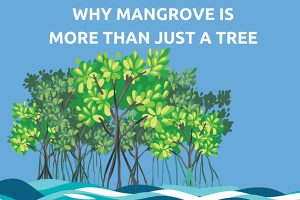The battle against deforestation requires new technological advancements. With 10 million hectares lost annually due to deforestation and approximately 70 million hectares affected by fires, these innovations are essential for early warning systems, sustainable commodity production, and empowering Indigenous Peoples through land mapping and climate finance access.
Additionally, ecosystem restoration, including reforestation efforts, can significantly contribute to climate mitigation and enhance food security while pushing the boundaries of sustainable wood products. and enhance food security while promoting sustainable wood products.
Summary
- Forests are critical ecosystems, providing habitats for most of the planet’s species and livelihoods for nearly one billion people. Healthy forests play a crucial role in mitigating climate change by acting as carbon sinks, absorbing billions of metric tonnes of CO2 annually. However, they are under threat due to deforestation and degradation.
- Preserving and restoring forests is essential for achieving the world’s climate goals.
- Financial support for forest-based climate solutions is woefully insufficient, with current funding falling far short of what is needed to make meaningful progress.
What are the challenges
Global demand for commodities
- The global demand for commodities such as soy, palm oil, beef, and timber fuels deforestation. These commodities are essential components in global supply chains where the demand for cheap and abundant products has driven the expansion of their production, often at the expense of forests. Without addressing the root causes of this demand, it’s difficult to halt deforestation linked to commodity production.
- Many commodity producers prioritize short-term profits over long-term sustainability. They may engage in unsustainable logging, overgrazing, or excessive use of pesticides and fertilizers, which harms both forests and surrounding ecosystems. Moreover, the complex global supply chains for commodities often make it difficult to trace the origin of products. This lack of transparency can enable illegal logging and deforestation to go unchecked, as products from deforested areas can be mixed with those from legal sources.
Insufficient finance
- Domestic and international finance for forest-based climate mitigation solutions averages US$2.3 billion per year, representing less than one percent of the necessary total. This negligible allocation is woefully inadequate and severely undermines the transformative impact that forests can have in achieving the ambitious goals set forth in the Paris Agreement.
- As unveiled in the 2022 Forest Declaration Assessment, not a single global indicator is on track to meet the 2030 goals of stopping forest loss and degradation and restoring 350 million hectares of forest landscape. Funding to meet those indicators is still only a fraction of what is needed. Indigenous Peoples (IPs) and local communities (LCs), who are integral to sustainable forest management, still receive far less funding than they need for securing land tenure rights and preserving forest ecosystems. Only 4 percent of total public climate finance in 2019 and 2020 was allocated for IPs and LCs, and only three percent of the financial need for transformational land tenure reform is being met annually.
Land tenure and rights
- In many regions, unclear land tenure and rights contribute to deforestation. Disputes over land ownership, lack of recognition of Indigenous and local community rights, and conflicting land use regulations lead to forest clearance. Governments often claim ownership of vast forested areas, while Indigenous communities hold traditional or customary rights. This lack of clarity can create fertile ground for illegal logging, land encroachment, and deforestation as there’s no clear authority responsible for safeguarding these lands.
The content above was published on the website of UNDP.
What is the response of the Conservation Society of Sierra Leone?
- REDD+ initiative in the Greater Gola Landscape
- Community engagements and demarcation at the Kambui Hills
- Alternative Livelihoods for families at the Western Area Peninsula
- Reforestation in Mangrove Areas like the Yawri Bay



